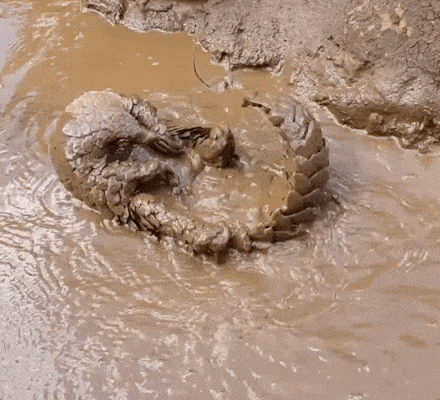Paleoethnobotanist and baby naturalist. PhD candidate at University of Cincinnati. Living in Ohio but loving the Southeast.
Don't wanna be here? Send us removal request.
Text

This is the funniest thing I've ever read. I would have LOVED to see that
126K notes
·
View notes
Photo

GULLS WILL DECIDE WHAT TO EAT BY WATCHING PEOPLE
Herring gulls (Larus argentatus) can perfectly thrive in coastal and urban landscapes, however, these birds will steal your food as soon as you are distracted. Urban gulls pay attention to human behaviour in food-related contexts, and will mimic what humans almost all the time, a new study shown.
In a simple test, researchers studied how herring gulls behave in front person eating snacks on Brighton beachfront, UK. They gave the gulls the choice between two differently coloured potato chips, and when the human were eating potatos chips from one color, seagulls approached the food, and chose the same colour that the experimenter was eating, the 95 per cent of the time.
Seagulls were able to use human cues for stimulus enhancement and foraging decisions. Given the relatively recent history of urbanization in herring gulls, this cross-species social information transfer could be a by-product of the cognitive flexibility inherent in species who steal food, called kleptoparasitic species. This success in urban environments is suggested to result from behavioural flexibility, which is likely to require specific cognitive adaptations. In food-stealing birds, success is said to reflect an ability to integrate and use information about both the environment and other individuals, and kleptoparasites generally have usually larger relative brain sizes than their hosts.
Photo by Jon J. Laysel
Reference (Open Access): Feist et al., 2023) Inter-species stimulus enhancement: herring gulls (Larus argentatus) mimic human food choice during foraging. Biology Letters.
5K notes
·
View notes
Link
“Whatever it was, their neighbor’s mounting resentment burst to the fore in the fall of 2017, in the form of a letter from a lawyer for their homeowner association that ordered the Crouches to rip out their native plant beds, and replace them with grass. The couple were stunned. They’d lived on their quiet cul-de-sac harmoniously with their neighbors for years, and chose native plants to help insects, birds and wildlife thrive. Now the association was telling them that their plantings not only violated the bylaws, but were eyesores that hurt property values. “Your yard is not the place for such a habitat,” the letter read. The Crouches were given 10 days to convert their front yard into a lawn that looked like everyone else’s. But instead of doing what they were told, the couple fought back, and ended up paving the way for a groundbreaking state law.“
5K notes
·
View notes
Text
Uncharismatic Fact of the Day
People are the only species with a multitude of languages, dialects, and accents– some animals do to! For example, the house finch song varies greatly from region to region, or even from one community to another. In the American state of New York, up to six distinct songs were discovered in the single block a few square kilometers big.

(Image: A male house finch (Haemorhous mexicanus) by Debbie McKenzie)
If you like what I do, consider buying me a ko-fi or leaving a tip!
33 notes
·
View notes
Photo

Meet the Yellow-bellied Sapsucker (Sphyrapicus varius)! This woodpecker has a wide range across North America and is known for its appetite for sap.
The clever bird excavates spots in the surface of trees, known as “sap wells,” where liquid that drips from higher up in the tree gathers for convenient consumption. It doesn’t “set it and forget it” either; this bird works the wells to ensure their sap-collecting efficiency and also protects them from competitors, including fellow sapsuckers.
Photo: Tom Murray, CC BY-NC 2.0, flickr
#AnimalFacts #birds #woodpecker #ornithology #YellowBelliedSapsucker #nature https://www.instagram.com/p/Ci-xoPcvLdt/?igshid=NGJjMDIxMWI=
308 notes
·
View notes
Text
The Mormon Church owns the most valuable property portfolio in America

More than five years ago, the MormonLeaks organization was founded to investigate and reveal corruption within the Latter Day Saints Church, from gender bias to financial transparency. After weathering baseless legal attacks from the church, the organization redoubled its efforts, changing its name to Truth and Transparency and expanding its remit to all organized religion.
In its latest report, Truth and Transparency chip away at the LDS Church’s financial opacity, revealing 15,963 parcels (1,754,633 acres)of property holdings across the USA, with a minimum value of $15.7 billion.
https://www.truthandtransparency.org/news/2022/04/05/lds-church-has-most-valuable-private-real-estate-portfolio-in-the-us-evidence-suggests/
Truth and Transparency was able to do this sleuthing thanks to a failure in the Church’s secrecy methods. While examining the records of known Church holdings, researchers noticed that each one of these properties was tied to a common address, no matter which holding company or other entity nominally owned it.
By feeding this address into Reonomy’s database of commercial US properties, they were able to pull up a massive data-set of suspected LDS properties. They hand-verified all properties valued at more than $20m, and another 1,000 randomly selected lower-value properties, confirming that they were all owned by the Church.
This makes the Church property portfolio the most valuable land-holdings in the USA, and they’ve only scratched the surface. The Reonomy database does not include residential properties, and it’s possible that the Church has properties that aren’t linked to the common address the researchers used to compile their data.
Truth and Transparency’s report includes an interactive map that lets you explore the Church’s properties. As they say the experience “can be jarring.” They have also published their full data-set:
https://bit.io/egd/lds-landholdings
9K notes
·
View notes
Photo

The reconstructed face of the “Cheddar Man” (c. 7,000 BCE) compared to his living descendant, Adrian Targett
The Cheddar Man is a Mesolithic skeleton that was recovered from England’s Cheddar Gorge in 1903. At around 9,000 years old, the Cheddar Man is the oldest complete skeleton ever discovered in the UK, and has long been hailed as the “first Briton.” DNA analysis on the Cheddar Man from 2018 indicated that he was lactose intolerant, had light-colored eyes, dark brown or black hair, and had a dark to black skin tone. Although the discovery of the Cheddar Man’s dark skin tone was surprising for both scientists and the public alike, it corresponds with recent research suggesting that genes linked to lighter skin only began to spread into Europe about 8,500 years ago - approximately 32,000 years later than what was previously believed.
In addition to the development on his skin tone, the Cheddar Man surprised scientists in 1997 when DNA analysis revealed that he had a living descendant - a retired history teacher named Adrian Targett. Targett and the Cheddar Man share the same mtDNA, which is inherited through the mother. In other words, they share a common maternal ancestor. What is even more remarkable is that Targett lives in Cheddar, only a half mile away from where his 9,000-year-old ancestor was discovered.
Targett was not invited to the initial reveal of his ancestor’s new facial reconstruction, but he has since seen it and has commented on the family resemblance. “I do feel a bit more multicultural now,” he once joked in an interview “And I can definitely see that there is a family resemblance. That nose is similar to mine. And we have both got those blue eyes.”
The development of the Cheddar Man’s skin tone has generated resistance, especially among far-right and white supremacist circles. Targett, however, is unbothered by it, stating that it is “marvelous what scientists can reconstruct once they sequence the DNA.” When asked if he thought whether the findings affected the way people think about race, Targett responded: “Yes, I do think it’s significant. Not many people in Cheddar mind it. But the lesson is that we’re all immigrants, whether you’ve been in a place for 10 minutes or 9,000 years. We’ve all come from somewhere.”
35K notes
·
View notes
Photo


Why are people repulsed by dead animals–but are happy to eat them too? What really happened to Fluffy’s body when you got her cremated? Do we really need to destroy roadkill? How do changing attitudes of animal ethics affect science and policy? What happens if you leave a euthanized animal out in nature?
Carcasses are full of secrets. You just gotta open them up! One day I might write this book.
1K notes
·
View notes
Text

4 shades of blue captured in a single image in Antarctica
49K notes
·
View notes
Photo

Kudu Stud strikes a pose for #wildographer & super ranger at @tanda.tula, @chadcocking / @chadcockingwildlifephotos * Give him a follow regular updates, prints & safari ideas.
#Wildography #wildographyandsafaris #africansafaris #tandatula #motswari #kudu #gqmagazine (at Motswari Private Game Reserve) https://www.instagram.com/p/CghCIzEszcJ/?igshid=NGJjMDIxMWI=
157 notes
·
View notes
Text

92K notes
·
View notes
Text
you can make posts that are anti lawns and pro biodiversity without downplaying the real, terrible danger that ticks pose
33K notes
·
View notes









